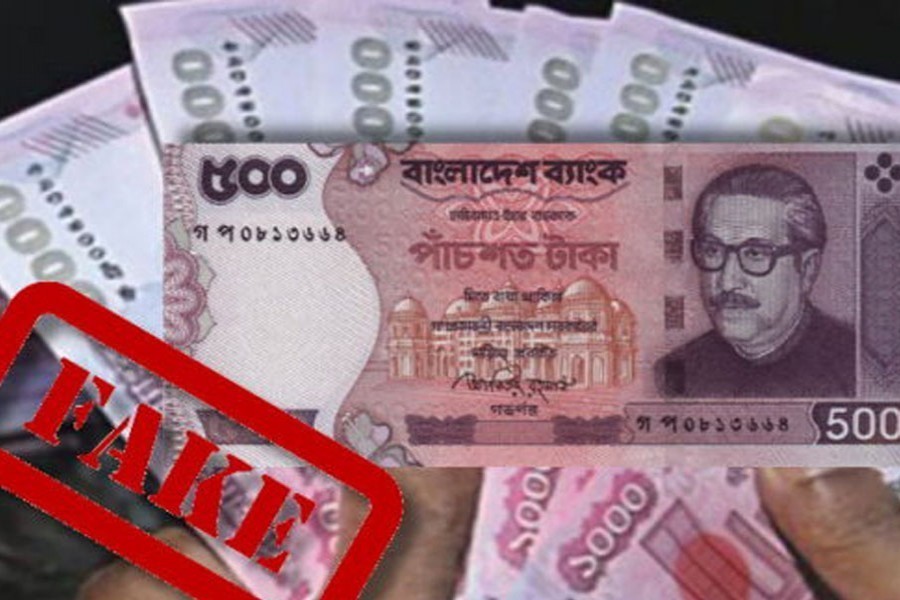Different law-enforcement agencies have launched a drive against manufacturers of counterfeit currency notes on secret information that more than 50 of the gangs are active in circulating their illegal money. Already a few of the linchpins have been arrested during the busting of their criminal dens. If this sounds good, what is of concern is that one of the gangs headed by a student of the civil engineering department of a private university has already circulated fake notes valued at more than Tk10 million. Other such gangs may have done so. Unless they get arrested and confess to the crime, the extent of circulation is likely to remain unknown.
Evidently, the counterfeit money-making gangs have become ---as they usually do on the eve of great festivals --- hyperactive in order to take advantage of the shopping spree the pre-Eid time is going to witness after two consecutive years' restraint and restrictions enforced by the pandemic. The shopaholics, in particular, are susceptible to ending with fake currency notes as they have little time to have a close look at the ones they receive. Also shops where the rush is heavy may also unwittingly accept the illegal notes.
The Bangladesh Bank performs its ritual duty of warning the public against fake notes and publishes guidelines of how the difference between legal tenders and those illegally manufactured like-alike can be detected. Yet not all are cautious enough for various reasons and get cheated. The problem, however, is not with the unsuspecting public, it is with the system of dealing with the criminal elements.
Illegal facsimile of the legal tenders should not be in circulation at all. But the tragedy is that no country has been successful in bringing this criminal act under total control. In Bangladesh, the gangs are only proliferating with time. Not only do they manufacture counterfeit notes of Bangladesh, they also produce fake currency tenders of foreign countries. A report published months ago claimed that a mastermind in collaboration with his Pakistani counterpart developed a chain of manufacturing and smuggling fake Indian currency notes. This came to light following the arrest of the mastermind and some members of his gang.
Now the crux of the problem lies in the legal provision to deal with the elements involved in this crime. Punishment, it appears, is light considering the crime. Usually they are awarded prison sentences from six months to a year. Once they come out, they get into the act of making counterfeit notes. Old habits die hard and the skill of faking currency notes they do not forget.
In the past 10 years, more than 5,000 counterfeiters of different such gangs were arrested, according to a report, and there are court cases against more than 1,000 of them. What about the rest 4,000? They come out of prison and return to their old trade. To the law enforcers, they are mostly familiar and no wonder, they are under surveillance. Yet the ubiquitous nature of the clandestine act at times goes unnoticed.
So the process of putting the illegal counterfeiters of money behind the bar following detection of their crime and then on release from jail their reengagement with the illegal act cannot be accepted. There are two options: either awarding long-term punishment or sending them to what is called a correction centre, focusing on reformation of their character. Obviously, the better option is the second one because it can use their special skills for them to lead a clean life. They must be trained to hone on their knowledge and skills in a profession suitable for them.


